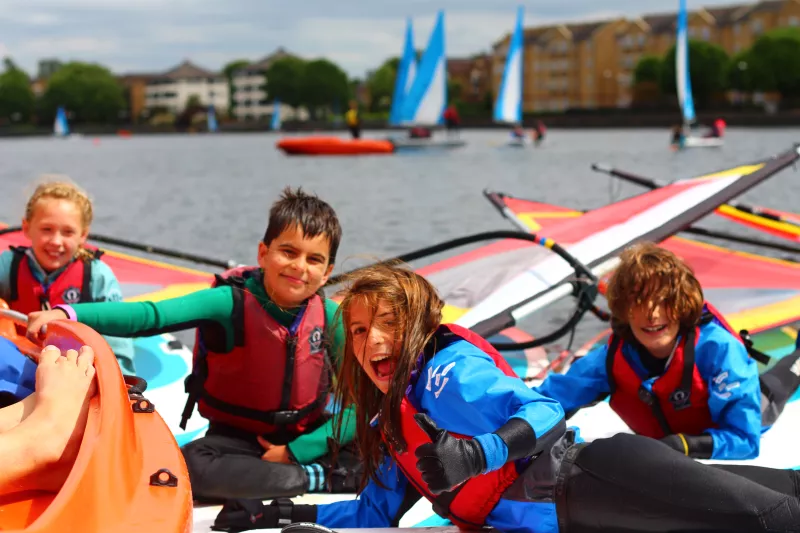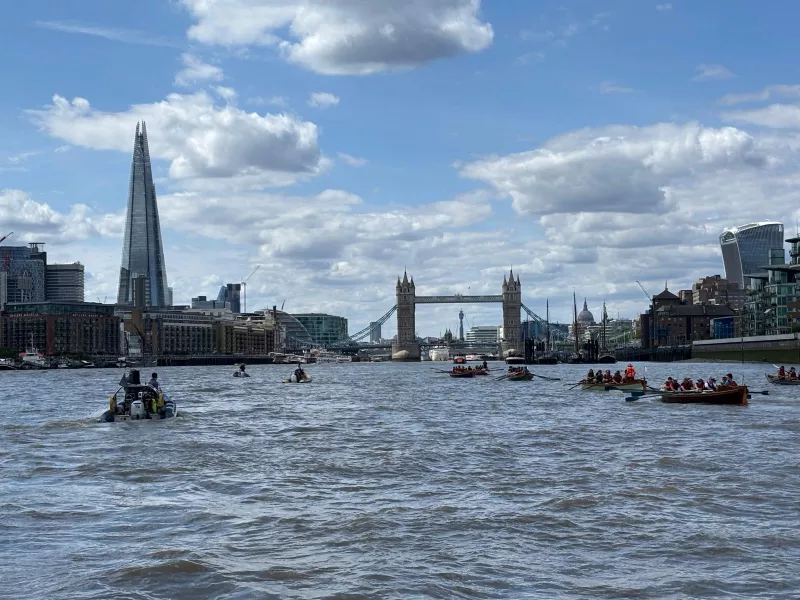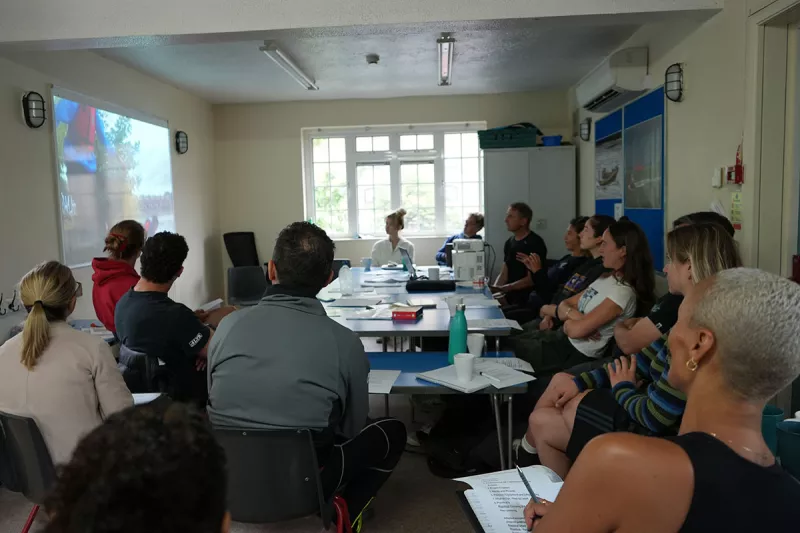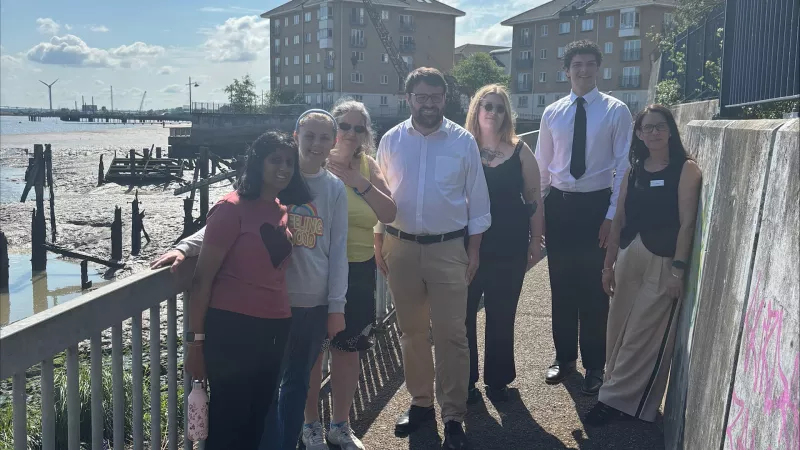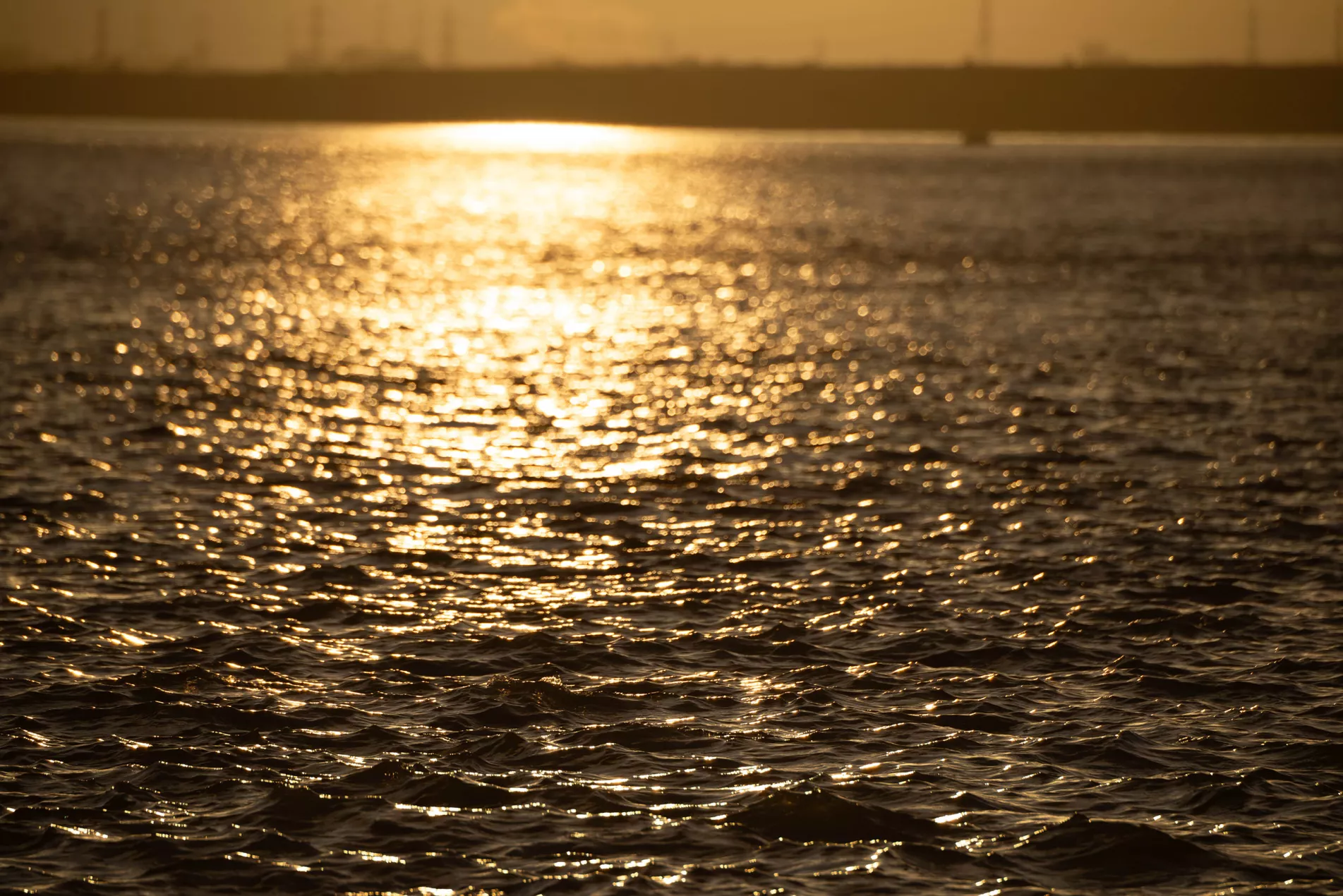Legacy of family-friendly Gravesend Sailing Club is as strong as ever
Making waves

The heritage of the oldest sailing club on the lower part of the River Thames has been protected by an increase in coaching development thanks to funding by Active Thames.
New and old members will continue to enjoy the benefits of the tight-knit sailing community.
By Emma Blackmore
Tucked away at the end of the promenade, the heritage of sailing in Gravesend is living fiercely on. The air – thick with laughter and chatter – is electric. A young girl with her hair styled into a plait, secures her buoyancy aid and walks down to enter the dinghy. An instructor follows her down. Closer to the BBQ, there’s a mum and baby, husbands and wives, and friends who greet each other warmly. “How’s the hip doing?” one member is asked. “How’s school going, young lady?” another asks. They are from all walks of life and all sorts of backgrounds, but they are united through their love of sailing.
Gravesend Sailing Club’s desire to see sailing continue to thrive has been supported by an investment in coach development, funded by Active Thames. The new initiative aims to entice people from all ages and backgrounds into watersports.
As a sailing novice, I’m a little nervous. I’m sitting with Sean Coomber, the club’s training principal – buoyancy aid on – about to try the club’s Discover Sailing taster session. The free sessions run every two weeks throughout the warmer months. With the glorious summer sun beaming, I ask him his advice for anyone who has never sailed before and who might be anxious about getting on the water.
“What, like you?” he asks with a cheeky smile and I mention that I’ve only kayaked. “Just give it a go! It’s fairly safe. We are careful to make sure that boats don’t capsize: buoyancy aids at the top of the masts ensure if the boats do go over, they won’t invert. There’s also an engine-powered safety boat during the beginner’s sessions. There is an adrenaline rush when the boat heels over a little bit, but that’s the fun part! It’s exciting.”
Sean is eager to create new opportunities to breathe new life into the club, which currently has 141 members. He hopes to make sailing accessible and more affordable to more people, especially young people. “[At first] sailing doesn’t seem accessible. You’ve got to learn to sail, you’ve got to buy a boat and you’ve got to find somewhere to keep your boat. Those three things combined aren’t that easy,” Sean says.
He aims to counteract this by offering Royal Yachting Association dinghy courses, powerboat sailing and safety boat courses, as well as the Discover Sailing sessions like this one. Over winter, the club enjoy Knowledge and Nosh sessions; talks where instructors and members discuss racing, safety, wildlife and more over dinner.
The club has received £2000 from Active Thames to help support the training of instructors. Sean, who started sailing ten years ago, is one of three coaches from Gravesend who will be completing the 5 day, 50 hour, dinghy instructor course in October. Completing the course will be fundamental in continuing the heritage of the family-friendly club.

“The instructors are really encouraging and educational and everyone helps each other”
Kevin Day
Gravesend Sailing Club member
Our conversation is interrupted by an instructor telling me my boat is ready. Peter Fletcher, an instructor whose sailing careers spans over 50 years, helps me into the Wayfareer dinghy, one of three that are club-owned.
“This here is very hard,” he says, pointing to the boom, the pole that controls the angle and shape of the sail, as I sit down on the bench in the middle of the dinghy. “Your head is very soft, so you’ll need to duck!” In front of me are many different coloured ropes.
As we sail and the promenade and the sound of laughter retracts, I focus on Peter’s instructions. I have two white ropes in my hand that attach to the jib, the triangular sail in front of the main sail. I keep them taut and close to my body as I listen to Peter, who is sitting at the back controlling the main sail and rudder.
“The history of the club goes back to 1894,” he says, “when it was started by trade people who were otherwise excluded. Sailing often doesn’t seem accessible but the club’s membership costs the same as a year’s subscription to a newspaper! It started as a club for likeminded people of every background, and that continues today. It’s a world of self-help and both young and old help each other.”
So far, we have sailed straight, but now it’s time to turn. The wind has picked up slightly. I pull the ropes from the right to the left and duck as the boom flies to the other side of the boat, narrowly missing my head. We start to turn and I lose my balance a little, shifting to the right as the boat heels over slightly.
Naturally, Peter is not fussed. “You’re doing really well,” he encourages. I get used to the routine: the ropes taut against my enclosed hand, the ducking down, reading the wind and water. Of course, I absolutely appreciate that Peter is doing all the work with the main sail but in that moment, as the setting sun reflects the water, I feel empowered. In a kayak, paddling is mainly to do with my own strength, but sailing felt greater- more technical and more involved.
When we return back to the club, I’m met with food and warm conversation. I speak to Kevin Day, a member from Ireland who joined the club three years ago with his young family. He’s on track to complete the Level 3 of the dinghy course soon which involves building advanced sailing techniques such as ferry gliding. He also hopes to do the instructors course, although he admits working in the ICU keeps him very busy. “Sailing is a great break away from work, it’s a great way to meet people, especially after Covid-19.
“The club is very supportive,” he smiles. “The instructors are really encouraging and educational and everyone helps each other.”
Related content
